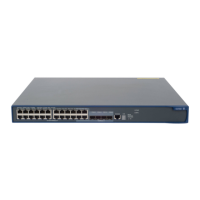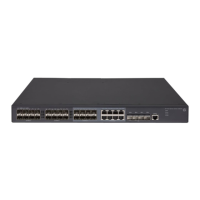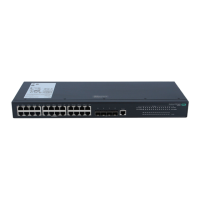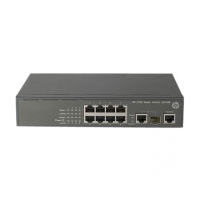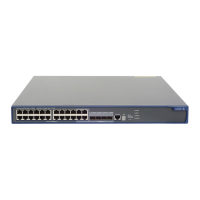375
Ste
Command
Remarks
8. Enable BFD for IPv6 IS-IS.
isis ipv6 bfd enable
By default, BFD for IPv6 IS-IS is
disabled.
Displaying and maintaining IPv6 IS-IS
Execute display commands in any view. For other display and reset commands, see "Configuring IS-IS."
Task Command
Display information about routes
redistributed by IPv6 IS-IS.
display isis redistribute ipv6 [ ipv6-address mask-length ]
[ level-1 | level-2 ] [ process-id ]
Display IPv6 IS-IS routing information.
display isis route ipv6 [ ipv6-address ] [ [ level-1 | level-2 ] |
verbose ] * [ process-id ]
Display IPv6 IS-IS topology information.
display isis spf-tree ipv6 [ [ level-1 | level-2 ] | verbose ] *
[ process-id ]
IPv6 IS-IS configuration examples
IPv6 IS-IS basic configuration example
Network requirements
As shown in Figure 92, Router A, Router B, Router C, and Router D, all enabled with IPv6, reside in the
same AS. Configure IPv6 IS-IS on the routers so that they can reach each other.
Router A and Router B are Level-1 routers, Router D is a Level-2 router, and Router C is a Level-1-2 router.
Figure 92 Network diagram
Device Interface IPv6 address Device Interface IPv6 address
Router A Eth
1/1 2001:1::2/64
Router B
Eth
1/1
2001:2::2/64
Router C Eth1/1 2001:2::1/64
Router
D
Eth1/1
2001:3::2/64
Eth1/2 2001:1::1/64 Eth1/2 2001:4::1/64
Eth1/3 2001:3::1/64
Eth1/1
2001:3::2/64
Router D
L2
Area 20
Router B
L1
Router C
L1/L2
Eth1/1
2001:1::2/64
Eth1/2
2001:1::1/64
Eth1/1
2001:2::1/64
Eth1/1
2001:2::2/64
Eth1/3
2001:3::1/64
Router A
L1
Area 10
Eth1/2
2001:4::1/64
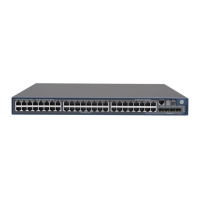
